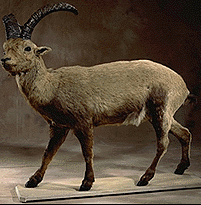DNA preservation and cryonics
 Following the news that mice have been cloned from 16 year old frozen tissue comes an announcement that scientists have made advances in resurrecting the extinct Pyrenean Ibex. This does not only offer hope that someday other extinct species may be resurrected and returned to nature, it further reinforces the power of low temperatures to preserve life and biological information. DNA can be extracted from tissue that is preserved with crude freezing techniques, including cryopreservation with no cryoprotection at all (straight freezing).
Following the news that mice have been cloned from 16 year old frozen tissue comes an announcement that scientists have made advances in resurrecting the extinct Pyrenean Ibex. This does not only offer hope that someday other extinct species may be resurrected and returned to nature, it further reinforces the power of low temperatures to preserve life and biological information. DNA can be extracted from tissue that is preserved with crude freezing techniques, including cryopreservation with no cryoprotection at all (straight freezing).
Successful resuscitation of cryonics patients requires reversal of the aging process (for most patients) and advanced molecular cell repair technologies. Such demanding requirements are not necessary to clone a cryonics patient. Although the objective of cryonics organizations is not to resurrect a clone of the person but that particular individual, the recent success stories about cloning animals from frozen tissue highlight that the debate about the feasibility of cryonics should not be so much about “revival” but personal survival. Biological revival should not present major obstacles.
People usually do not make cryonics arrangements to allow a the creation of a genetic copy of themselves in the future. One use of human DNA storage is to assist with the identification of remains of cryonics patients that have died under circumstances where such identification will be difficult (for example, the cryonics organization only receives a brain). DNA preservation is also an option for people who would like to have a closely similar pet in the future. Futuristic possibilities such as combination of human cloning and mind uploading to recreate the person come to mind as well.
The Cryonics Institute offers human and pet DNA preservation for members with and without funding arrangements.